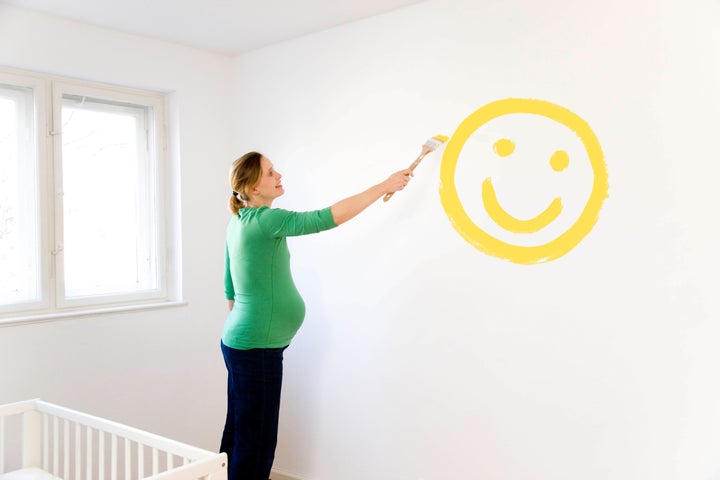
Are we supposed to care what claims like "low VOC" mean when all we really want is the perfect shade of blue on our bedroom walls? You might when you learn what the EPA has found -- indoor concentrations of volatile organic compounds (VOCs) are up to 10 times as high as outdoor concentrations, and can climb up to a thousand times higher when you're in the middle of painting! Forget the smog over LA -- the air indoors is worse than the air outdoors. And far worse when we add paint into the mix.
So how does the EPA standardize paint to prevent this toxic exposure from happening? Well, they focus on reducing chemicals that cause smog outdoors, which doesn't address the air quality indoors. I turned to Jennifer Taggart, author of "Smart Mama's Green Guide: Simple Steps to Reduce Your Child's Toxic Chemical Exposure," for an explanation of what this really means for interior paint:
Certain compounds that are VOCs in the general sense and have been linked to adverse health impacts are nonetheless NOT VOCs for purposes of the paint regulations because they don't contribute to photochemical smog. For example, methylene chloride, which is identified as a carcinogen, is excluded from the definition of VOC when it comes to paint regulations because it does not contribute to the formation of photochemical smog. In other words, when it comes to VOC limits on paints, it is a consideration of outdoor air quality driving the EPA's program, when most of us using the paint are concerned about the impact to indoor air quality.
Trustworthy Certifications for No and Low VOC Paint
What are we to do when painting our homes in light of these EPA regulations, or lack of regulations? Even the claim "zero VOC" does NOT necessarily mean non-toxic. While safer than conventional paints, they may still contain harmful chemicals, such as formaldehyde and glycol ethers, that can irritate the eyes, nose, throat, skin and lungs. We're left in the dark again, because manufacturers aren't required to tell us what those "other" chemicals are. The safest bet is to look for paints certified by independent organizations such as Green Seal and Scientific Certification Systems. Green Seal's paint certification standards don't allow many non-VOC compounds, including heavy metals and carcinogens.
On a side note, don't confuse "low odor" with "low VOC" because many times the fumes from VOCs are simply being masked by other chemicals!
Taming the Tints
With the understanding of what low VOC claims mean, we should be able to simply buy some paint, pick the perfect shade and get started.
Stop right there. We have another problem! Pigments used to tint the paint can significantly increase VOCs in the base paint, so confirm what type of colorant your store uses to make sure it's safe. The Green Home Guide also explains that the deeper the hue, the more pigment needed, and therefore the more VOCs in the paint. You might consider going with a lighter shade because darker colors require more colorant.
Choosing Natural Paints and Pigments
Natural paints are made from naturally occurring materials like citrus oil, lime, clay, linseed oil, casein and chalk. Since they don't use any synthetic oil products, natural paints are low in the VOCs regulated by the EPA for air quality. But as we discussed, just because paint is labeled "natural", does not mean it's better for your health. You must read the labels and once again check with Green Seal.
If you're feeling really industrious, you can even try your hand at making your own non-toxic milk or flour paint. Of course -- don't forget to open all your windows after painting and consider moving out for a few days...
Follow Sloan Barnett on Twitter and on her Facebook Fan page.